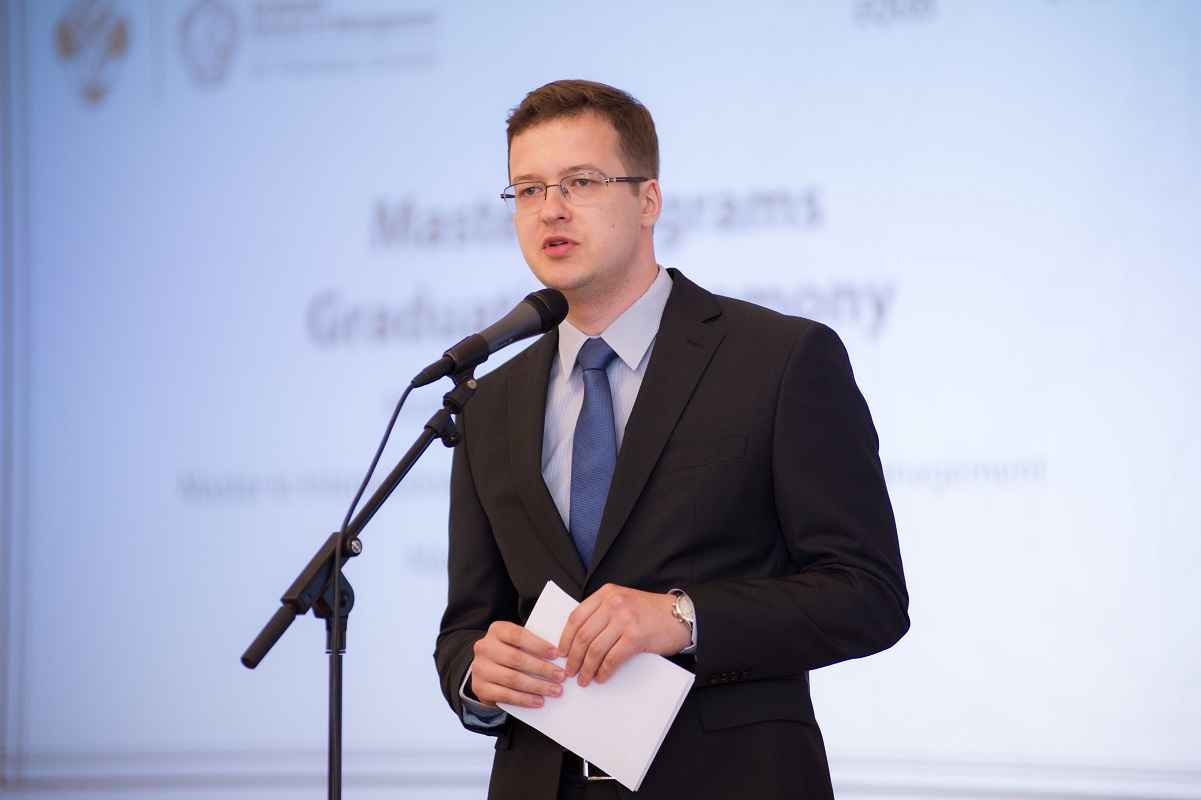You can forget about the word ‘impossible’ or how to switch to distance learning in a matter of days

As far back as 14 March, St Petersburg University decided to convert to online learning as a result of the coronavirus pandemic, becoming the first such institution in Russia to do so. At the University’s Graduate School of Management (GSOM), the complete changeover to digital learning was accomplished in a record three days. Konstantin Krotov, Head of School, the Graduate School of Management, describes how they managed to do this.
How was the system of distance learning set up?
In keeping with an order issued by Senior Vice-Rector for Academic Activities and Teaching Methods Marina Lavrikova and Senior Vice-Rector Elena Chernova, starting on 16 March, absolutely all in-person events and classes were cancelled, and all lectures and seminars began to be held online. During the first two or three days, several School of Management classes were postponed, but already by the end of that week, all lectures were being held according to the schedule. Now, teachers are giving lectures and holding classes, group work and even defences of projects online.
How quickly were you able to switch tracks? What made this possible?
One of the most important factors that made it possible for us to successfully make prompt decisions about critical tasks was the teamwork exhibited by a group of people who do not know what the word ‘impossible’ means. When it became clear on Saturday, 14 March, that the staff of the GSOM was to make provisions for the switchover to online at a moment’s notice, the School’s director, Olga Dergunova, created a task force. The members of this group took responsibility for the core activities: methodological issues, cooperation with students and communication with the staff.
The academic directors of the programmes got in touch with each and every teacher personally and explained the gravity of the situation, so the teachers responded positively and displayed flexibility. Those members of the rector’s office who are responsible for engineering issues had to come up with immediate answers to a lot of questions all at the same time, but first off they helped to draw up instructions and carry out training for those who had never before worked with a platform for telecommuting. Students who had volunteered went through additional training and helped other GSOM students figure out how to work with the system.
During the first few days, the administration’s IT division for the School of Management set up a special service to support online learning. Requests from teachers, students and staff are accepted by email, a special form on the website and a designated multi-channel telephone number. A support team composed of IT specialists, teachers and GSOM staff, who have gone through additional training, process them expeditiously. From Monday to Saturday, around fifteen systems administrators and experts provide assistance in Russian and English and respond to questions about the technology and methodology of online learning.
What electronic tools are used? Is there one tool across the board, or are there a number of them from which you can choose?
Today, you can study online almost anywhere, using Microsoft products, teamwork platforms and even messengers and social networks. Some universities develop their own systems for online learning, while others use external ones that are ready-made.
Each of these approaches has its pluses and minuses. In the past few weeks, most external platforms have been experiencing colossal usage, since educational institutions all over the world have switched to online teaching. But such platforms have huge design and tech support teams that deal with problems quickly and efficiently. The operational stability of universities’ internal systems often falls on the shoulders of the universities themselves, and, taking into account the extent to which academic programmes have gone online, how quickly they have done so and the burden this has put on their limited technical staffs, such systems can suffer extreme overload and break down.
For online lectures, the staff at GSOM are using a combination of MS Office 365 and the Microsoft Teams workspace, which allows us to connect up a large number of participants simultaneously, and this makes it possible to deliver data-driven lectures to several groups at the same time. It is also quite simple and easy to use.
Teams, however, like all such systems, is a platform for online lectures and interaction with students. For dealing with homework and assessing students’ performance, you need to use a learning management system. So, students continue to send material to each other and hand in their homework through our regular system, Blackboard, which the GSOM staff have been using for a long time.

